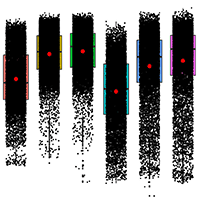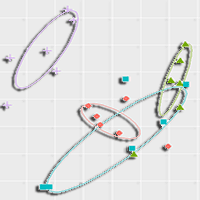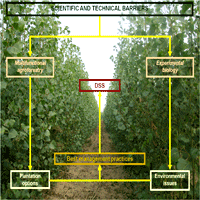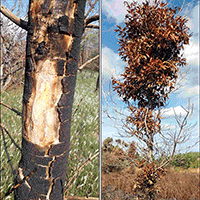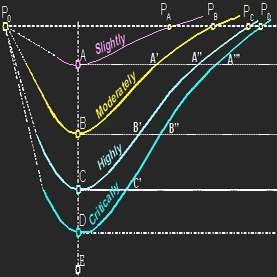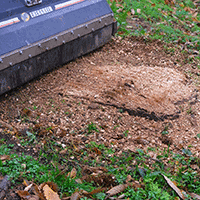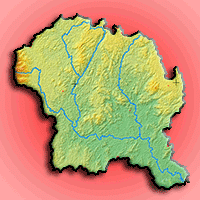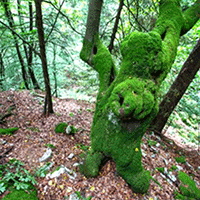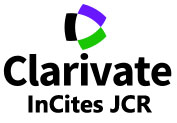This study examines the landscape changes in two forest restoration areas: one adjacent to remaining forest fragments (AA) and the other non-adjacent (ANA), located in the municipality of Cabo de Santo Agostinho, Pernambuco, Brazil. The areas have been previously used for sugarcane cultivation and have undergone restoration interventions involving planting over 30 native species. The satellite images used were from 2011, 2015, and 2019, allowing for the analysis of changes in vegetation cover and landscape fragmentation. The results indicate that both areas experienced an increase in vegetation cover over time, as evidenced by the normalized difference vegetation index (NDVI). However, adjacent to forest fragments, the AA area exhibited greater ecological connectivity and less fragmentation, resulting in a large forest fragment from 2015 onwards. On the other hand, the non-adjacent ANA area showed slower progress but managed to form a large fragment by 2019, thanks to the presence of planted species such as Mimosa caesalpiniifolia. Moreover, the analysis of fragmentation metrics revealed a reduction in the division index in both areas, which was more pronounced in AA. The supervised classification of the images indicated changes in the restoration areas and their surroundings, with the expansion of classes such as Forest and Exposed. The results highlight the importance of functional connectivity between forest fragments, especially in areas adjacent to remaining fragments, which can accelerate the restoration process and reduce fragmentation. Active restoration, through planting high-density native species, proved effective in rehabilitating forest cover. This study suggests that forest restoration in anthropized areas can mitigate fragmentation, with effects observable in less than a decade, particularly when connecting existing fragments. These findings underscore the importance of implementing restoration strategies that foster connectivity between forest fragments and of continuously monitoring fragmentation metrics to evaluate the efficacy of restoration actions.
Keywords
, , , , ,
Citation
Pimentel DJO, Feliciano ALP, Marangon LC, Pessoa MMDL, Da Silva MIO, Leite AP, Silva EA (2025). Can the dynamics of forest restoration reduce landscape fragmentation in the Atlantic forest?. iForest 18: 61-68. - doi: 10.3832/ifor4639-018
Academic Editor
Luigi Saulino
Paper history
Received: May 15, 2024
Accepted: Jan 24, 2025
First online: Apr 04, 2025
Publication Date: Apr 30, 2025
Publication Time: 2.33 months
© SISEF - The Italian Society of Silviculture and Forest Ecology 2025
Open Access
This article is distributed under the terms of the Creative Commons Attribution-Non Commercial 4.0 International (https://creativecommons.org/licenses/by-nc/4.0/), which permits unrestricted use, distribution, and reproduction in any medium, provided you give appropriate credit to the original author(s) and the source, provide a link to the Creative Commons license, and indicate if changes were made.

Breakdown by View Type
(Waiting for server response...)
Article Usage
Total Article Views: 6389
(from publication date up to now)
Breakdown by View Type
HTML Page Views: 2178
Abstract Page Views: 2196
PDF Downloads: 1811
Citation/Reference Downloads: 4
XML Downloads: 200
Web Metrics
Days since publication: 256
Overall contacts: 6389
Avg. contacts per week: 174.70
Article Citations
Article citations are based on data periodically collected from the Clarivate Web of Science web site
(last update: Mar 2025)
(No citations were found up to date. Please come back later)
Publication Metrics
by Dimensions ©
Articles citing this article
List of the papers citing this article based on CrossRef Cited-by.
(1)
Alvares CA, Stape JL, Sentelhas PC, De Moraes Gonçalves JL, Sparovek G (2013)Köppen’s climate classification map for Brazil. Meteorologische Zeitschrift 22 (6): 711-728.
CrossRef |
Gscholar
(2)
Arruda AB, Souza RF, Brito GHM, Moura JB, Oliveira MHR, Santos JM, Silva SD (2021)Resistance of soil to penetration as a parameter indicator of subsolation in crop areas of sugar cane. Scientific Reports 11: 169.
CrossRef |
Gscholar
(3)
Barzan FR, Baigorria JME, Bó RF (2015)Bird community diversity in three habitat types in an ecological corridor in the Atlantic Forest of Misiones province, Argentina. Tropical Conservation Science 8 (4): 955-974.
CrossRef |
Gscholar
(4)
Bergès L, Chevalier R, Avon C (2013)Influence of forest road, road-surfacing material and stand age on floristic diversity and composition in a nutrient-poor environment. Applied Vegetation Science 16 (3): 470-479.
CrossRef |
Gscholar
(5)
Brancalion PHS, Niamir A, Broadbent E, Crouzeilles R, Barros FSM, Almeyda Zambrano AM, Baccini A, Aronson J, Goetz S, Reid JL, Strassburg BBN, Wilson S, Chazdon RL (2019)Global restoration opportunities in tropical rainforest landscapes. Science Advances 5 (7): aav3223.
CrossRef |
Gscholar
(6)
Bustamante MM, Silva JS, Scariot A, Sampaio AB, Mascia DL, Garcia E, Sano E, Fernandes GW, Durigan G, Roitman I, Figueiredo I, Rodrigues RR, Pillar VD, de Oliveira AO, Malhado AC, Alencar A, Vendramini A, Padovezi A, Carrascosa H, Freitas J, Siqueira JA, Shimbo J, Generoso LG, Tabarelli M, Biderman R, de Paiva Salomão R, Valle R, Junior B, Nobre C (2019)Ecological restoration as a strategy for mitigating and adapting to climate change: lessons and challenges from Brazil. Mitigation and Adaptation Strategies for Global Change 24 (7): 1249-1270.
CrossRef |
Gscholar
(7)
Cai H, Yang X, Xu X (2015)Human-induced grassland degradation/restoration in the central Tibetan Plateau: the effects of ecological protection and restoration projects. Ecological Engineering 83: 112-119.
CrossRef |
Gscholar
(8)
Chazdon RL, Guariguata MR (2016)Natural regeneration as a tool for large-scale forest restoration in the tropics: prospects and challenges. Biotropica 48 (6): 716-730.
CrossRef |
Gscholar
(9)
Cohen J (1960)A coefficient of agreement for nominal scales. Educational and Psychological Measurement 20 (1): 37-46.
CrossRef |
Gscholar
(10)
Diniz ES, Mota PHS, Reis JP, Da Silva Costa W, De Paiva EV, De Lana JM, Lage GB, Do Amaral CH (2023)Connectivity value of Atlantic forest fragments: pathways towards enhancing biodiversity conservation. Brazilian Journal of Botany 47 (1): 249-259.
CrossRef |
Gscholar
(11)
Duarte GT, Santos PM, Cornelissen TG, Ribeiro MC, Paglia AP (2018)The effects of landscape patterns on ecosystem services: meta-analyses of landscape services. Landscape Ecology 33 (8): 1247-1257.
CrossRef |
Gscholar
(12)
Hooftman DAP, Billeter RC, Schmid B, Diemer M (2004)Genetic effects of habitat fragmentation on common species of Swiss Fen Meadows. Conservation Biology 18 (4): 1043-1051.
CrossRef |
Gscholar
(13)
Huang F, Chunyu X, Zhang D, Chen X, Ochoa CG (2020)A framework to assess the impact of ecological water conveyance on groundwater-dependent terrestrial ecosystems in arid inland river basins. Science of The Total Environment 709: 136155.
CrossRef |
Gscholar
(14)
IBGE (2012)Manual técnico da vegetação brasileira [Technical manual of Brazilian vegetation]. Brazilian Institute of Geography and Statistics - IBGE, website. [in Portuguese]
Online |
Gscholar
(15)
IBGE (2019a)Mapa de vegetação do Brasil [Vegetation map of Brazil]. Brazilian Institute of Geography and Statistics - IBGE, website. [in Portuguese]
Online |
Gscholar
(16)
IBGE (2019b)Mapa de solos do Brasil [Soil map of Brazil]. Brazilian Institute of Geography and Statistics - IBGE, website. [in Portuguese]
Online |
Gscholar
(17)
Juvanhol RS, Fiedler NC, Santos AR, Pirovani DB, Louzada FLRO, Dias HM, Tebaldi ALC (2011)Análise espacial de fragmentos florestais: caso dos Parques Estaduais de Forno Grande e Pedra Azul, estado do Espírito Santo [Spatial analysis of forest fragments: case of the state parks of Forno Grande and Pedra Azul, State of Espírito Santo]. Revista Floresta e Ambiente 18 (4): 353-364. [in Portuguese]
CrossRef |
Gscholar
(18)
Kotchenova SY, Vermote EF, Matarrese R, Klemm FJ (2006)Validation of a vector version of the 6S radiative transfer code for atmospheric correction of satellite data. Part I: Path radiance. Applied Optics 45 (26): 6762-6774.
CrossRef |
Gscholar
(19)
Kotchenova SY, Vermote EF (2007)Validation of a vector version of the 6S radiative transfer code for atmospheric correction of satellite data. Part II. Homogeneous Lambertian and anisotropic surfaces. Applied Optics 46 (20): 4455-4464.
CrossRef |
Gscholar
(20)
Lortie CJ, John JS, Spangler W (2019)Do or do not. There is no try in restoration ecology. Restoration Ecology 27 (5): 955-958.
CrossRef |
Gscholar
(21)
Luz ARC, Massi KG, Pocius O, Campos MMS, Santiami EL (2024)Land cover effects on regenerants density and richness in restoration treatments in the Atlantic Rainforest biome. Revista Árvore 48: 1-15.
CrossRef |
Gscholar
(22)
Majumdar K, Datta BK (2016)Effects of patch size, disturbances on diversity and structural traits of tropical semi-evergreen forest in the lowland Indo Burma hotspot: implication on conservation of the threatened tree species. Journal of Mountain Science 13 (8): 1397-1410.
CrossRef |
Gscholar
(23)
Martins RN, Abrahão SA, Ribeiro DP, Colares APF, Zanella MA (2018)Spatio-temporal analysis of landscape patterns in the Catolé Watershed, northern Minas Gerais. Revista Árvore 42 (4): e420407.
CrossRef |
Gscholar
(24)
McRae BH, Hall SA, Beier P, Theobald DM (2012)Where to restore ecological connectivity? Detecting barriers and quantifying restoration benefits. PLoS One 7 (12): e52604.
CrossRef |
Gscholar
(25)
Meli P, Holl KD, Rey-Benayas JM, Jones HP, Jones PC, Montoya D, Mateos DM (2017)A global review of past land use, climate, and active
vs. passive restoration effects on forest recovery. PloS One 12: 1-17.
CrossRef |
Gscholar
(26)
Muñiz-Castro MA, Williams-Linera G, Benayas JMR (2006)Distance effect from cloud forest fragments on plant community structure in abandoned pastures in Veracruz, Mexico. Journal of Tropical Ecology 22 (4): 431-440.
CrossRef |
Gscholar
(27)
Paula MD, Groeneveld J, Huth A (2015)Tropical forest degradation and recovery in fragmented landscapes - Simulating changes in tree community, forest hydrology and carbon balance. Global Ecology and Conservation 3: 664-677.
CrossRef |
Gscholar
(28)
Perkl RM (2016)Geodesigning landscape linkages: coupling GIS with wildlife corridor design in conservation planning. Landscape and Urban Planning 156: 44-58.
CrossRef |
Gscholar
(29)
Pinheiro JAC, Fernandes-Filho EI, Gomes LC, Soares VP, Sarcinelli TS (2021)Forest analysis in the landscape context at São Bartolomeu River Basin, Viçosa-MG. Revista Árvore 45: e4533.
CrossRef |
Gscholar
(30)
Planet (2016)Rapid eye imagery product specifications. Apollo Mapping, Colorado, USA, pp. 50.
Gscholar
(31)
Purre AH, Pajula R, Ilomets M (2019)Carbon dioxide sink function in restored milled peatlands - The significance of weather and vegetation. Geoderma 346: 30-42.
CrossRef |
Gscholar
(32)
QGIS Development Core Team (2020)QGIS geographic information system. Web site.
Online |
Gscholar
(33)
R Development Core Team (2020)R: a language and environment for statistical computing. R Foundation for Statistical Computing, Vienna, Austria.
Online |
Gscholar
(34)
Rezende CL, Uezu A, Scarano FR, Araujo DSD (2015)Atlantic Forest spontaneous regeneration at landscape scale. Biodiversity and Conservation 24 (9): 2255-2272.
CrossRef |
Gscholar
(35)
Ribeiro MC, Metzger JP, Martensen AC, Ponzoni FJ, Hirota MM (2009)The Brazilian Atlantic Forest: how much is left, and how is the remaining forest distributed? Implications for conservation. Biological Conservation 142 (6): 1141-1153.
CrossRef |
Gscholar
(36)
Ritter LJ, Campanello PI, Goya JF, Pinazo MA, Arturi MF (2018)Plant size-dependent response of native tree regeneration to landscape and stand variables in loblolly pine plantations in the Atlantic Forest, Argentina. Forest Ecology and Management 429: 457-466.
CrossRef |
Gscholar
(37)
Sangsupan HA, Hibbs DE, Robinson BAW, Elliotti S (2018)Seed and microsite limitations of large-seeded, zoochorous trees in tropical forest restoration plantations in northern Thailand. Forest Ecology and Management 419 (420): 91-100.
CrossRef |
Gscholar
(38)
Seganfredo D, Cunha B, Magalhães VL, Cielo-Filho R, Cmara CD (2019)Landscape ecology in a watershed of the Ocoy River, Western Parana State, Brazil. Floresta e Ambiente 26 (1): e20150279.
CrossRef |
Gscholar
(39)
Tavernia BG, Nelson MD, Garner JD, Perry CH (2016)Spatial characteristics of early successional habitat across the Upper Great Lakes states. Forest Ecology and Management 372: 164-174.
CrossRef |
Gscholar
(40)
Tonyaloglu EE, Erdoan N, Cavdar B, Kurtan K, Nurlu E (2021)Comparison of pixel and object-based classification methods on RapidEye satellite image. Turkish Journal of Forest Science 5 (1): 1-11.
CrossRef |
Gscholar
(41)
Trujillo-Miranda AL, Toledo-Aceves T, Barrera-López F, Gerez-Fernández P (2018)Active versus passive restoration: recovery of cloud forest structure, diversity, and soil condition in abandoned pastures. Ecological Engineering 117: 50-61.
CrossRef |
Gscholar
(42)
Van Der Putten WH, Bardgett RD, Bever JD, Bezemer TM, Casper BB, Fukami T, Kardol P, Klironomos JN, Kulmatiski A, Schweitzer JA, Suding KN, Van De Voorde TFJ, Wardle DA (2013)Plant-soil feedbacks: the past, present and future challenges. Journal of Ecology 101 (2): 265-276.
CrossRef |
Gscholar
(43)
Vermote EF, Tanré D, Luc Deuzé J, Herman M, Morcrette JJ (1997)Second simulation of the satellite signal in the solar spectrum, 6S: an overview. IEEE Transactions on Geoscience and Remote Sensing 35 (3): 675-686.
CrossRef |
Gscholar
(44)
Vorovencii I (2018)Quantification of forest fragmentation in pre- and post-establishment periods, inside and around Apuseni Natural Park, Romania. Environmental Monitoring and Assessment 190 (6): 367.
CrossRef |
Gscholar
(45)
Zengin H, Degermenci AS, Bettinger P (2018)Analysis of temporal changes in land cover and landscape metrics of a managed forest in the west Black Sea region of northern Turkey: 1970-2010. Journal of Forestry Research 29 (1): 139-150.
CrossRef |
Gscholar
